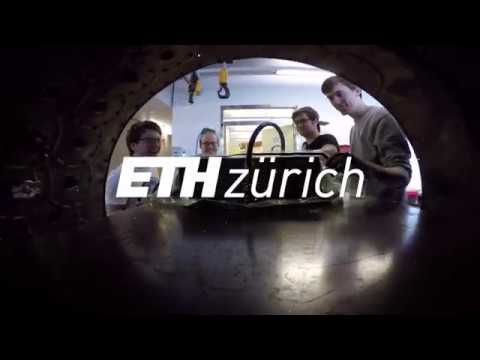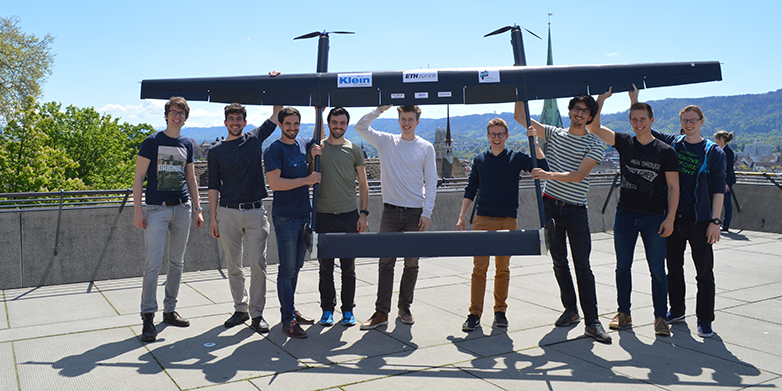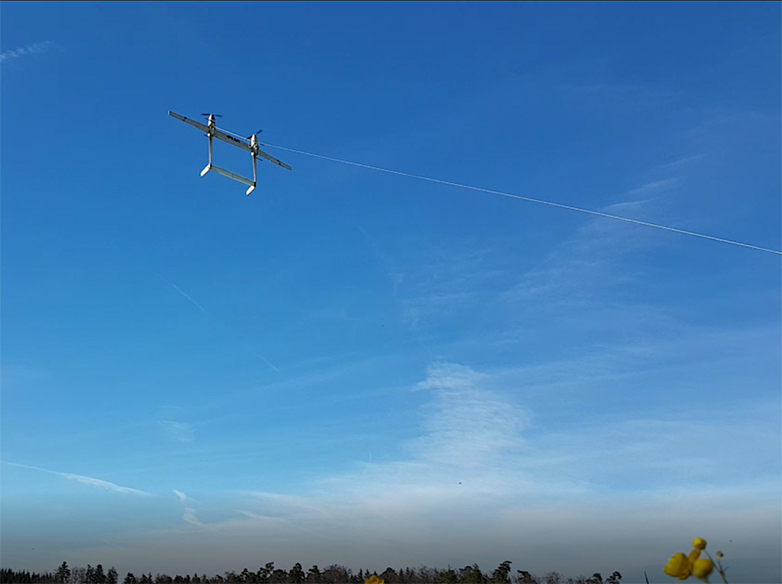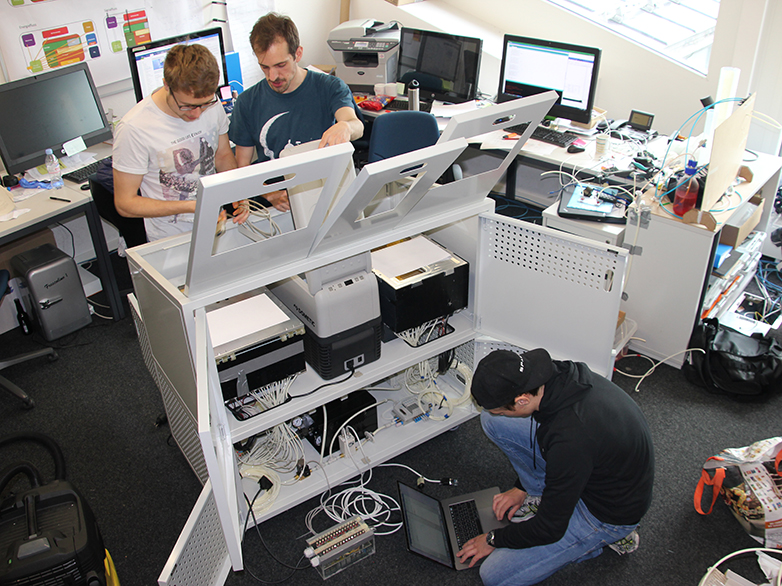Students showcase their practical skills
In the focus projects, teams of mechanical engineering students can put their theoretical knowledge into practice and develop new technological solutions independently over the course of two semesters. ETH News caught up with two teams that are developing an innovative wind power plant and an incubator for skin cells.
ETH Zentrum, CLA Building, Room J31: Back in early September, it was just an empty room; today, computers and desks are jammed in side by side. "We had to build our project from scratch," says Lorenz Affentranger, a mechanical engineering student in his sixth semester, referring to the start of the external pageFterocall_made focus project. The project aims to develop an innovative system to generate power from wind energy.
An ultra-light carbon aeroplane is connected via a rope to a mobile generator on the ground, creating an "airborne wind energy system" in which the aeroplane first unwinds the rope from the pulley and then flies in complex circles to generate electricity. To fully exploit the wind energy, the aeroplane can fly at different heights depending on the weather and location. For the project, the team both developed the aeroplane and programmed the control technology, which ensures that the aeroplane autonomously remains at the altitude where it generates the most energy.
Students take responsibility
Ftero is one of nine focus projects offered to undergraduate students by ETH's Department of Mechanical and Process Engineering (D-MAVT). Over the course of two semesters, the students are given time to develop an idea into a project with a tangible result that is as technologically innovative as possible. A total of 93 students are currently participating in the projects, including 72 from D-MAVT and a further 5 from electrical engineering (D-ITET). Students from other universities, including the Zurich University of Applied Sciences, the Lucerne University of Applied Sciences and the Zurich University of the Arts, are also taking part.
To ensure they produce a result in time for the project closing event on 30 May, the participants have to grow together as a functioning team over the course of a few months and develop skills that they have not yet learned in their studies. In addition to mechanical engineering skills, the students must also demonstrate management and marketing expertise, with a view to better preparing them for the professional world. ETH Zurich intentionally only supports the students in the technical aspects of the project, and by offering them access to workspaces and equipment. All project decisions are made by the students. "Until now, understanding the theoretical foundations was enough," says Affentranger, "but now we need to apply these theories, build an entire project, and learn how to sell our idea."
The Ftero team contacted almost 400 companies to find partners and sponsors. With the aid of a self-developed brochure, crowdfunding and considerable patience, they finally got the support they needed for their project. The airborne wind energy system is now so advanced that the team will not only present it at the Focus Roll-out event next week at ETH, but they have also been invited to the Drôle de drone festival at the Cité des Sciences et de l'Industrie in Paris.
Help for burn victims
While the Ftero project demanded engineering expertise, the nine students in the external pageSkinReactorcall_made team also had to develop a solid grounding in biology. "We are building a machine that will facilitate the growth of standardised skin cells," explains Björn Joos, a mechanical engineering student in his sixth semester. This skin will later help burn victims, in particular children. Until now, children with severe burns have had to undergo multiple operations, because transplanted skin does not grow with the child. Skin cells grown in the laboratory offer hope, as they can grow like natural skin.
It was the meaningfulness of the project that inspired the team members to choose SkinReactor. "We wanted to help others," they all unanimously agree. However, they found the interdisciplinary work particularly challenging at the beginning, even though two biomedical engineering master's students from D-ITET are also part of the team. The thought processes of biologists and doctors were simply alien to the budding engineers. "There are far fewer norms in biology," says Joos, explaining one of the differences.

"Learning to act as an equal"
Even the search for partners proved unsuccessful at first. "The project only really got going in February after we'd spoken to foundations about funding," reports mechanical engineering student Caroline Zalud, who is handling sponsorship for the project. In addition to finding the right target group, Zalud's approach was also critical for success. "I learned to approach people as equals and to stop behaving like a student," she explains. SkinReactor has since become the focus project with the largest budget, and the team is now a tight-knit group that also meets socially.
Despite making good progress over the past few months, the SkinReactor team's technical solution is still a long way off the finished product. At the very least, the basis for the machine will have been developed before the project comes to an end. "It generally takes a long time for medical projects to be implemented," explains Lukas Bircher, a mechanical engineering student in his sixth semester.
In spite of the many technical and personal challenges and the countless working hours – which have gone far beyond the scope of the normal curriculum – none of the students from Ftero or SkinReactor regret their decision to work on the focus project. "Right at the start of the project we looked for a sponsor for a coffee machine," says Affentranger grinning, and his teammate Renato Canonica adds: "I wanted to do something where I could set the tasks myself." Bircher also has no doubt that all of the hard work has paid off: "It's a unique chance to try out taking responsibility for something for a year in a safe environment in the university."
The other 2016/2017 focus projects
external pageARCcall_made
Development of technology, including navigation method, which can be used to drive electric vehicles autonomously
Athlas
Construction of landing gear that will enable helicopters to land on steep, uneven terrain
external pageFormula Student Electriccall_made
Construction of the Pilatus electric racing car
SeatCase
Development of a lightweight seating concept that can be used as both a suitcase and a seat
external pageSuncar iRoadstercall_made
Construction of an electrically powered research vehicle to research various driving dynamics and alternative steering concepts
Voliro
Development of a drone with six rotors (Hexacopter) that can turn in any direction
3DCarb
Development of a 3D printing method for fibre-reinforced plastic, which can be used to create structures that were previously unrealisable



